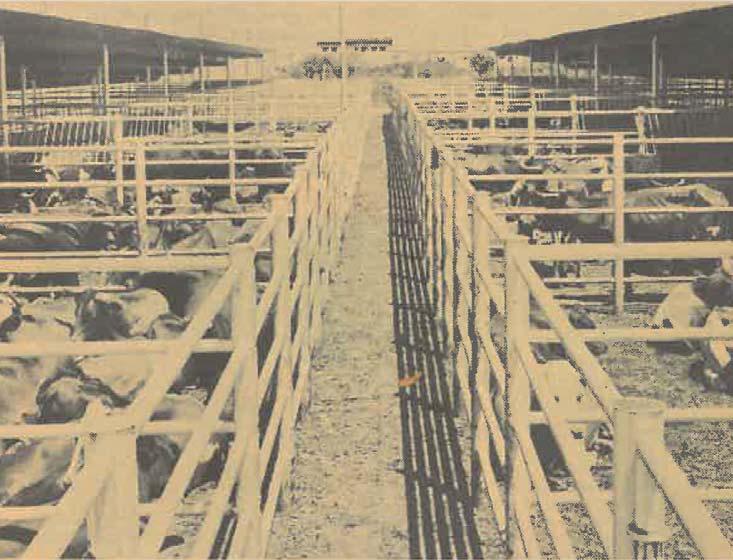
The double rail is used for conveying dressed beef carcasses (after inspection) from the main abattoir to the cooling chambers. Most abattoirs use only a single rail system. Before it is inspected, the dressed carcass is on a single-rail overhead conveyor. It is then cut in half, inspected, washed down and transferred to the double rail where the two halves travel alongside one another to the cooling chambers.
The installation of a rail system has fully mechanised the abattoir and made it possible for the complete dressing operation to be carried out while the carcass is suspended. The new system cost R250 000 [about R26 million today] and is capable of handling 600 cattle in a 9,5-hour shift.
This means a skinned, cleaned and inspected carcass arrives in the cooling chambers every 45 seconds. Under the old system, which used manual labour, only 45 carcasses an hour could be handled.
PROCEDURE
This story is from the September 20, 2024 edition of Farmer's Weekly.
Start your 7-day Magzter GOLD free trial to access thousands of curated premium stories, and 9,000+ magazines and newspapers.
Already a subscriber ? Sign In
This story is from the September 20, 2024 edition of Farmer's Weekly.
Start your 7-day Magzter GOLD free trial to access thousands of curated premium stories, and 9,000+ magazines and newspapers.
Already a subscriber? Sign In

Syngenta Seedcare celebrates a decade of innovation
Syngenta's ambition is to enable their customers' investments to grow in healthy soil from treated seeds to young plants through innovation and collaboration, writes Magda du Toit.

Agri workers shine at Western Cape awards
Lindie-Alet van Staden, a garden and olive orchard manager at L’Ormarins Wine Estate in Franschhoek, was crowned as the Western Cape Prestige Agri-Worker of 2024 at a gala event recently held near Paarl.

Small and large farmers recognised at grain awards
The annual Grain SA/Syngenta awards ceremony bears testimony to the quality of farmers in the grain industry.

Growing partnerships: Fedgroup's flexible and innovative approach
Janine Ryan spoke to Warren Winchester, general manager of impact investing at Fedgroup, about why the company became involved in agriculture, and what it offers farmers and their immediate communities.

Why fish farms fail, and how to avoid becoming a statistic
The popularity of launching fish farms is not matched by their success. Leslie Ter Morshuizen, owner of Aquaculture Solutions, explores the factors that cause most of these businesses to go under.

Where history and modernity meet in a luxurious setting
Brian Berkman kept his eyes peeled for ghosts in the oldest continuously run hotel in South Africa, but all he found was a fabulous two-night stay.

THE HITCHING POST
I'm a stylish elderly lady with a radiant glow and a good sense of humour that keeps me young at heart.

Cutworms: check the weeds on your fields!
Zunel van Eeden explains why understanding the ecological interplay between cutworms and weeds is crucial for effective pest management. Producers should disrupt the life cycle of cutworms to minimise crop damage.

Does high-density grazing mimic grazing patterns of game?
In their paper on high-density grazing in Southern Africa, professors Angelinus Franke and Elmarie Kotzé from the Department of Soil, Crop and Climate Sciences at the University of the Free State say high-density grazing systems may not accurately reflect natural ecosystems. Roelof Bezuidenhout reports.

Global grain outlook: 2024/25 marketing season
In its latest summer crops report, the Crop Estimates Committee says South African farmers intend to plant 4,47 million hectares of summer grains and oilseeds in the 2024/25 season, up 1% from the previous season. As South Africa exports maize and soya bean, Annelie Coleman reports on the latest trends in the international grain and oilseed markets, amid fluctuations in weather conditions and ongoing armed conflicts.